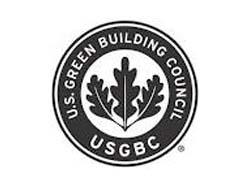USGBC's Campus Conservation Nationals Results in 6 GWh of Energy Savings
Washington, DC, May 20, 2015— In its fifth year, more than 343,000 students and staff across 125 colleges and universities participated in the U.S. Green Building Council’s Campus Conservation Nationals (CCN) 2015, which saved the schools more than $290,000 in electricity and water in just three weeks.
Over the five years of the competition, CCN participants have saved 6 million kilowatt hours (six GWh) of electricity, equivalent to averting more than 9 million pounds of CO2 from the atmosphere.
The program is run by Center for Green Schools at the U.S. Green Building Council (USGBC), through its USGBC Students program and in partnership with Lucid, the Alliance to Save Energy and the National Wildlife Federation.
From February 1 through April 30, students and staff competed to achieve the greatest reductions in their residence halls’ energy use over a three-week period. Students and staff used tactics such as direct action, real-time consumption dashboards and social media to motivate and encourage sustainable behaviors, proving that occupants play a critical role in greening their buildings. By making commitments to turn off unused electronics, take shorter showers, use the stairs instead of the elevator and other simple changes in behavior, students across the country demonstrated how individual actions could make a big collective difference in the way our buildings consume electricity and water.
The ten schools with the largest overall percent reduction of electricity produced were (listed alphabetically) California State University—Chico, Concordia College, Dickinson College, Eastern Mennonite University, Georgia State University, Hofstra University, Northwest Missouri State University, Oklahoma State University, San Diego State University and Western Technical College, with the highest-performing school reducing its electricity use by 30.6% during its competition.
The five schools with the largest overall percent reduction in their water use were (listed alphabetically) Eastern Washington University, Oberlin College, Pima Community College, University of Nevada—Las Vegas and Wake Forest University, with the highest-performing school reducing its water use by 19.8%.
